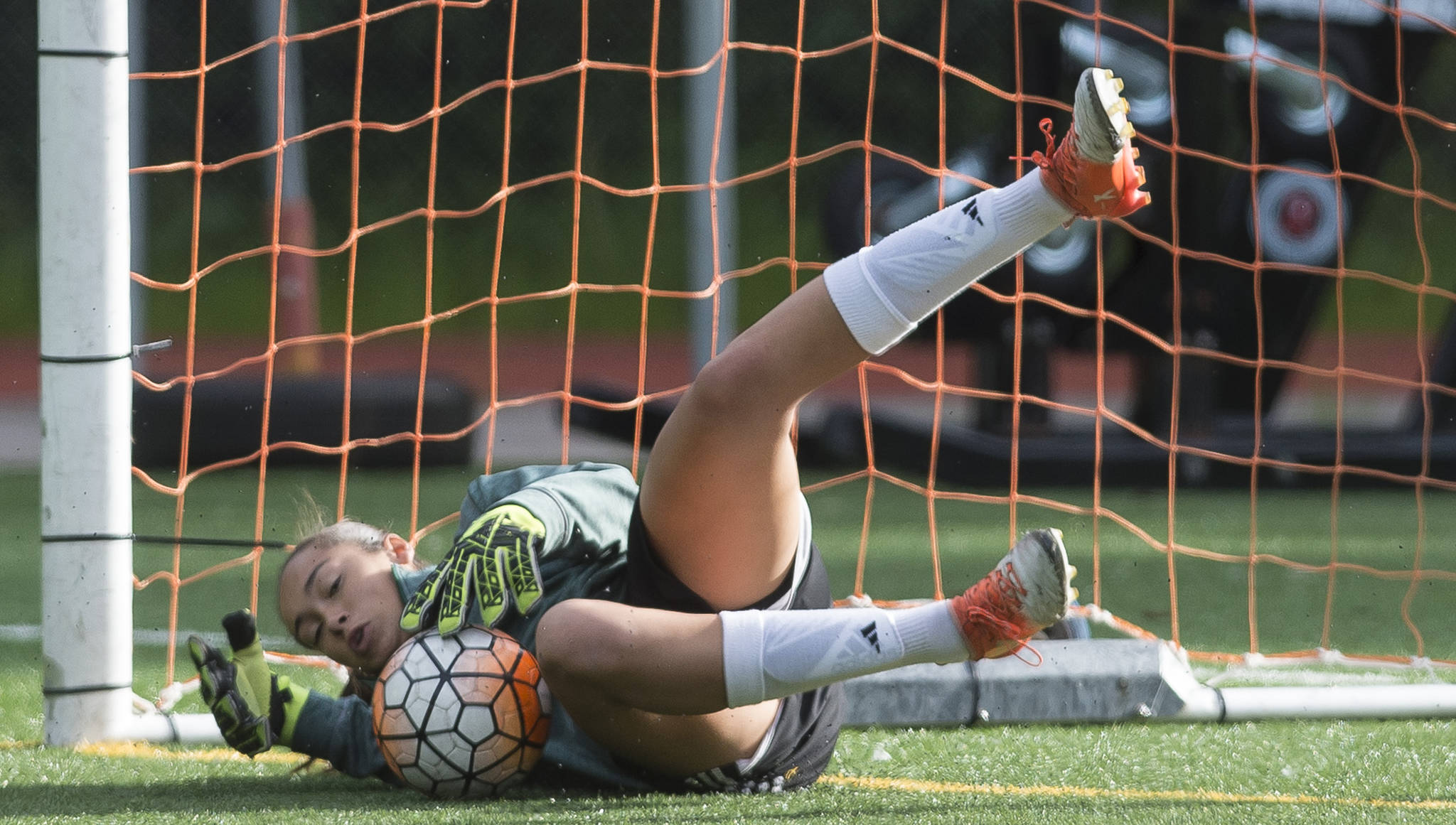The inside of Phallon Tullis-Joyce’s yellow and black composition notebook is a collage of fish drawings and meticulous measurements and notes. Think of a diary of someone who’s obsessed with fish.
It was this fascination with the natural world that led the 20-year-old from Shoreham, New York, to attend the University of Miami and study marine biology. That, and Hurricanes women’s soccer coach Mary-Frances Monroe wanted Tullis-Joyce on her squad.
Now three years into college, it’s clear Tullis-Joyce’s decision to attend the UM was the right one. She has maintained the starting goaltender position for the Hurricanes since she was a sophomore and has taken her studies to heart.
Beginning her junior year, Tullis-Joyce was the recipient of the National Oceanic and Atmospheric Sciences Administration (NOAA) Hollings Scholarship. The scholarship offers tuition assistance for 120 undergraduate students across the country studying in NOAA-related fields such as marine biology. On top of that, scholarship recipients receive financial aid to carry out a 10-week summer internship in their field of study. The interns then share their work at a national symposium.
Well acquainted with the tropical marine ecosystems off Florida and the Solomon Islands, when deciding where to study, Tullis-Joyce shifted her focus north — way north.
“I really wanted to do field research,” Tullis-Joyce said. “I hadn’t done field research in the past, and what better place than Alaska to start doing it?”
Since arriving to Juneau in May, Tullis-Joyce says Alaska’s waters have lived up to their pristine and wild billing.
“Any time I’m out on the boat in Juneau, it’s like a winter marine paradise for marine biology. It’s just such a different climate (than Miami) that it breeds different marine species,” Tullis-Joyce said. “I feel like everything grows bigger here. … And just the variety of things that you would’ve never have thought would grow or survive in these cold waters. Like the sea stars or sea anemones that you also find in Miami, are here in Alaska. They’re just different species adapted to the cold. So I’ve always found that fascinating.”
Most Division I college goaltenders — especially those starting in the stacked Atlantic Coast Conference — plan their summer offseason around staying in soccer shape. Not Tullis-Joyce, though. Even before she screamed “soccer talent” with her athleticism and size, she was a young girl that loved the ocean.
“I always wanted to be a marine biologist,” Tullis-Joyce said. “Like in kindergarten, they’ll have you fill out a little questionnaire and I had one from when I was younger that says like, ‘I want to be a dot, dot dot,’ and it says marine biologist. So I really did know from an early age that I wanted to do this.”
Tullis-Joyce’s research looks at the digestive rates of staghorn sculpin when given a treat of chum salmon smolt. In a small room on the first floor of the University of Alaska Fairbanks building in Juneau, there are close to a dozen waist-level, open air, green tanks with fresh salt water filtering through them. Each tub, which measures almost 10 feet in length, has three screens sectioning off four cubic spaces.
This is where Tullis-Joyce’s work takes place. Tullis-Joyce places baby chum salmon in each one, waits for the sculpin to eat it, and then at a given time euthanizes the fish. Once the fish is killed, Tullis-Joyce waits a given amount of time before extracting the fish remains from inside the sculpin. She then compares the initial mass of the salmon with its final mass (after it’s been eaten).
With the information collected from another research assistant regarding what percentage of the sculpin’s diet is chum salmon, UAF graduate student Douglas Duncan can draw conclusions about the relationship between the two species.
“That will give us an idea if these predators are an important source of mortality for juvenile salmon,” Duncan said.
Tullis-Joyce said that the only thing that can rival her passion for sea life is soccer. On top of tending to sculpin by day, Tullis-Joyce spends time at night at Adair-Kennedy Field.
She plays on one of the four adult women’s soccer teams that play twice a week for most of the summer. There are other college soccer players from Juneau that play in the league, too. Still, with Tullis-Joyce in net, the Chan’s Thai Kitchen/Hoke Designs team has a leg up on every other team.
The friendliness between opposing players in the Juneau league still catches Tullis-Joyce off guard.
“You don’t see that in the ACC play — people are cutthroat, you just want to win the game.”
The incoming senior (with two more years of playing eligibility) allowed less than a goal per game last season. Her 16 goals allowed in 19 starts made for a program record and helped the team upset then No. 2 Virginia in September. The team finished the season 10-8-1 and 5-5 in the ACC.
About a month after a season-ending loss to Clemson in the first round of the ACC Championship, Tullis-Joyce had surgery on her ankle, and now has less than a month before the Hurricanes open their 2017 campaign on the road in an exhibition against University of Central Florida.
“We definitely want to make the ACC tournament and NCAA tournament next year,” she said.
Correction: An earlier version of this article incorrectly referred to the ACC as the Athletic Coast Conference. The ACC stands for the Atlantic Coast Conference. The Empire regrets the error.
• Contact sports reporter Nolin Ainsworth at 523-2272 or nolin.ainsworth@juneauempire.com.

